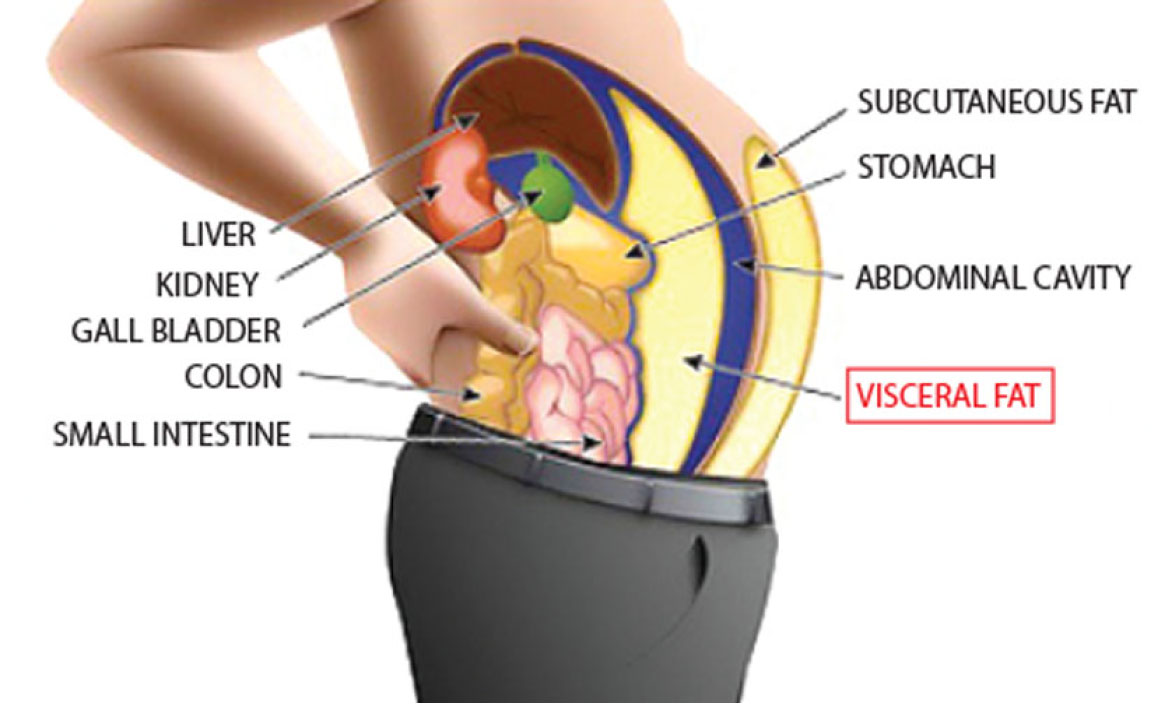What’s Visceral Fat?
Visceral fat is technically excess intra-abdominal adipose tissue accumulation. It is known as a “deep” fat that is stored further underneath the skin than “subcutaneous” belly fat. It is a form of gel-like fat that is wrapped around internal organs, including the liver, pancreas and kidneys. However, this fat is very close to the liver and can turn it into cholesterol. From there, the visceral fat goes through the bloodstream. It may collect along the walls of the arteries. This leads the arteries to get hard and narrow (called atherosclerosis). Too much of visceral fat creates can lead to inflammation and high blood pressure, which increases the risk of serious health problems as well. Visceral fat has been linked to metabolic disturbances and increased risk for cardiovascular disease and type 2 diabetes.

Body Fats Anatomy
Another issue with visceral fat is its impact on adiponectin or “fat hormone”. Adiponectin is a special hormone that plays a crucial role in regulating blood glucose levels and fatty acid breakdown. Visceral fat inhibits adiponectin. When adiponectin levels are low, the body can accumulate unhealthy fat and insulin resistance may take place.
Excess visceral fat is linked with an increased risk for:
• Heart Disease • Cancer • Stroke • Dementia • Diabetes • Depression • Arthritis • Obesity • Sexual Dysfunction • Sleep Disorders
What causes Visceral Fats?
When there is too much glucose in the bloodstreams and the cells are already filled glycogen stores, glucose is stored as fat. This happens a lot more quickly and easily when consuming refined processed carbohydrates and sugary foods. Processed starches like white bread or white rice, along with high-sugar foods, are rapidly converted into simple sugars that enter the bloodstream and trigger a larger release of insulin from the pancreas. The result is usually weight gain, some more even more hunger which leads to continue overeating and a vicious cycle that makes it hard to stop eating sweets. Thus the more often and longer that blood insulin levels remain high, the more likely a person to accumulate excess body fat.
How to measure Visceral Fat?
The only way to tell for the problem of visceral fat is to have an MRI or CT scan, which are expensive for both and not medically necessary. However, according to the Journal of the American Medical Association, if you have a waistline greater than 40 inches (102 cm) for men and 35 inches (89cm) for women, that is an indicator that you are carrying too much belly fat.
